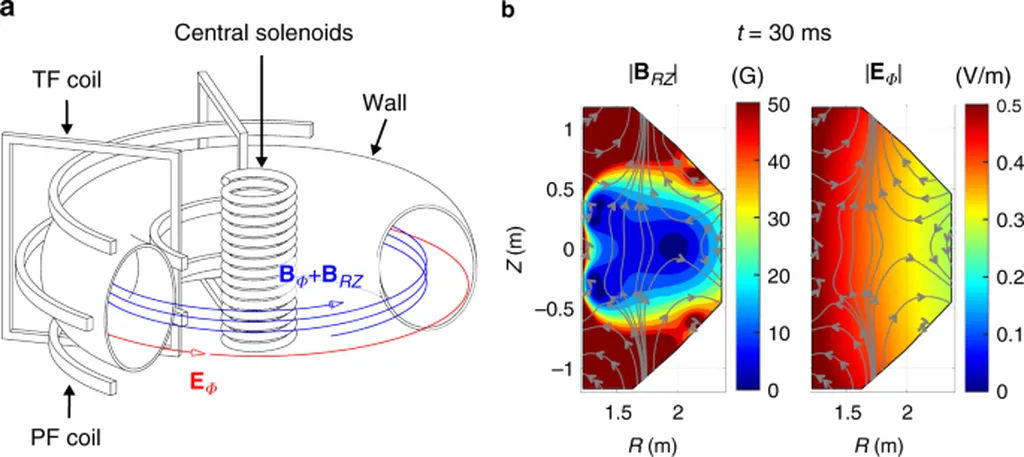In the relentless pursuit of clean, sustainable energy, scientists are continually refining the intricate physics behind tokamak reactors, devices that harness the power of nuclear fusion. A recent study, published in the journal “Fusion Energy” (formerly known as ‘Nuclear Fusion’), has shed new light on the breakdown phase of tokamak operation, a critical period that sets the stage for successful plasma initiation. The research, led by P.A. Molina-Cabrera from the Ecole Polytechnique Fédérale de Lausanne (EPFL), Swiss Plasma Center (SPC), offers a compelling validation of the 0D Townsend breakdown theory and introduces a novel perspective on the role of the poloidal magnetic field null gradient.
Tokamaks, doughnut-shaped devices that confine hot plasma using magnetic fields, are at the heart of fusion energy research. The breakdown phase is the initial step in tokamak operation, where an electric field is applied to ionize the neutral gas, creating a plasma. Understanding and controlling this phase is crucial for the reliable operation of both current and future tokamak devices.
Molina-Cabrera and his team conducted experiments on the TCV tokamak, a versatile device known for its flexible magnetic configurations. They scanned breakdown parameters along three axes: neutral pressure, toroidal loop voltage, and, for the first time, the poloidal magnetic field null gradient. The results were intriguing. “We observed that the magnetic null gradient has a direct influence on the effective connection length,” Molina-Cabrera explained. “A smaller magnetic null gradient leads to a larger effective connection length and hence a lower loop voltage required for breakdown.”
The study found that the 0D Townsend theory, a simplified model of gas breakdown, successfully predicted whether a breakdown would occur in over 96% of cases. However, this accuracy was achieved only when considering a minimum number of ionizing collisions per unit connection length between 8 and 13. This finding suggests that secondary electron emission from the high-field-side (HFS) wall might play a significant role in the breakdown process.
The implications of this research are substantial for the energy sector. A deeper understanding of the breakdown phase can enhance the reliability and efficiency of tokamak operation, bringing us closer to the realization of practical fusion energy. As Molina-Cabrera noted, “This work not only validates the 0D Townsend theory in a toroidal geometry but also highlights the importance of considering additional physical phenomena, such as secondary electron emission, in future models.”
The study also underscores the value of experimental validation in advancing our understanding of complex physical processes. By bridging the gap between theory and practice, researchers can refine models and improve the performance of tokamak devices. This, in turn, can accelerate the development of fusion energy, a clean, abundant, and sustainable power source for future generations.
In the dynamic field of fusion research, every breakthrough brings us one step closer to harnessing the power of the stars. Molina-Cabrera’s work is a testament to the power of curiosity, innovation, and the relentless pursuit of knowledge. As we stand on the brink of a new era in energy production, the insights gained from this study will undoubtedly shape the future of tokamak technology and the broader energy landscape.

